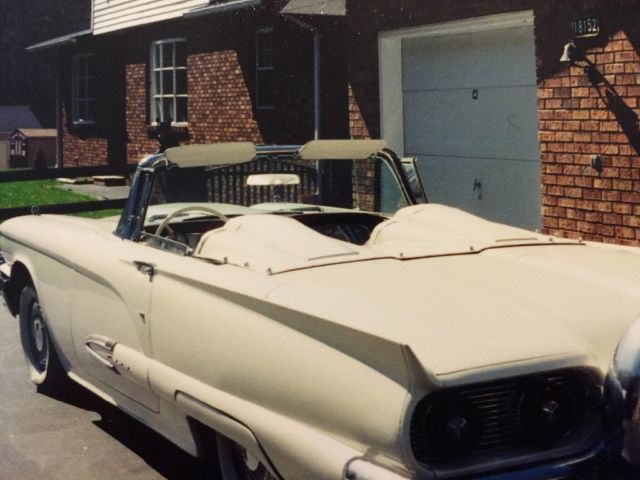
There was an optional fabric convertible top. WThe top of the 1955 Ford Thunderbird was fiberglass and removable. Even the speedometer said it could go up to 150mph. Still, it was sleeker and had a stylish hood scoop. Physically the Thunderbird it looked like a lot of other Fords, with circular headlamps and tail lamps and a modest tailfin. Within days 3,500 were sold and, by the end of 1955 16,155 were sold, outselling the Corvette more than 23-to-1, as the Corvette only sold 700 units that year. They rolled off the production line in September of that year and went on sale in October as the ’55 model. The 1955 Ford Thunderbird made its debut at the Detroit Auto Show in February, 1954. At the time Chevrolet introduced the Chevrolet Corvette at the New York Auto Show, and Ford simply had to compete with its own great car or, as they called this new market, the personal car. This was the time when the 2-seat convertible was introduced, which was actually the first 2-seat Ford vehicle since 1938. 1955 -1957 is known as the first generation of Ford Thunderbird. This car, besides looking good, also drove well and was wheeled by National Dirt Late Model Hall of Famer Bob Kosiski.There is no denying the awesome design and style of the Ford Thunderbird. However, you shouldn't have any problem identifying the '59 Ford Thunderbird stock car we have here. And about the only way to identify the brand is to look at the grille and taillights or an identifying model decal.

Over the years common body rules have given rise to the nearly identical bodies of today's race cars, the aero of each brand is almost the same.

Some models were light-years faster than others. The design differences between distinct makes and models contributed heavily to the aerodynamics, which of course, related directly to speed, thanks to the airflow around the car.

Changes were minimal and different makes and models looked just as they did on the street. In the early days, the body styles of the stock cars differed little between the dealership showroom and the racetrack's garage. In racing the term "stock car" has many meanings, and the definition varies widely depending on the time period when these race cars competed.


 0 kommentar(er)
0 kommentar(er)
